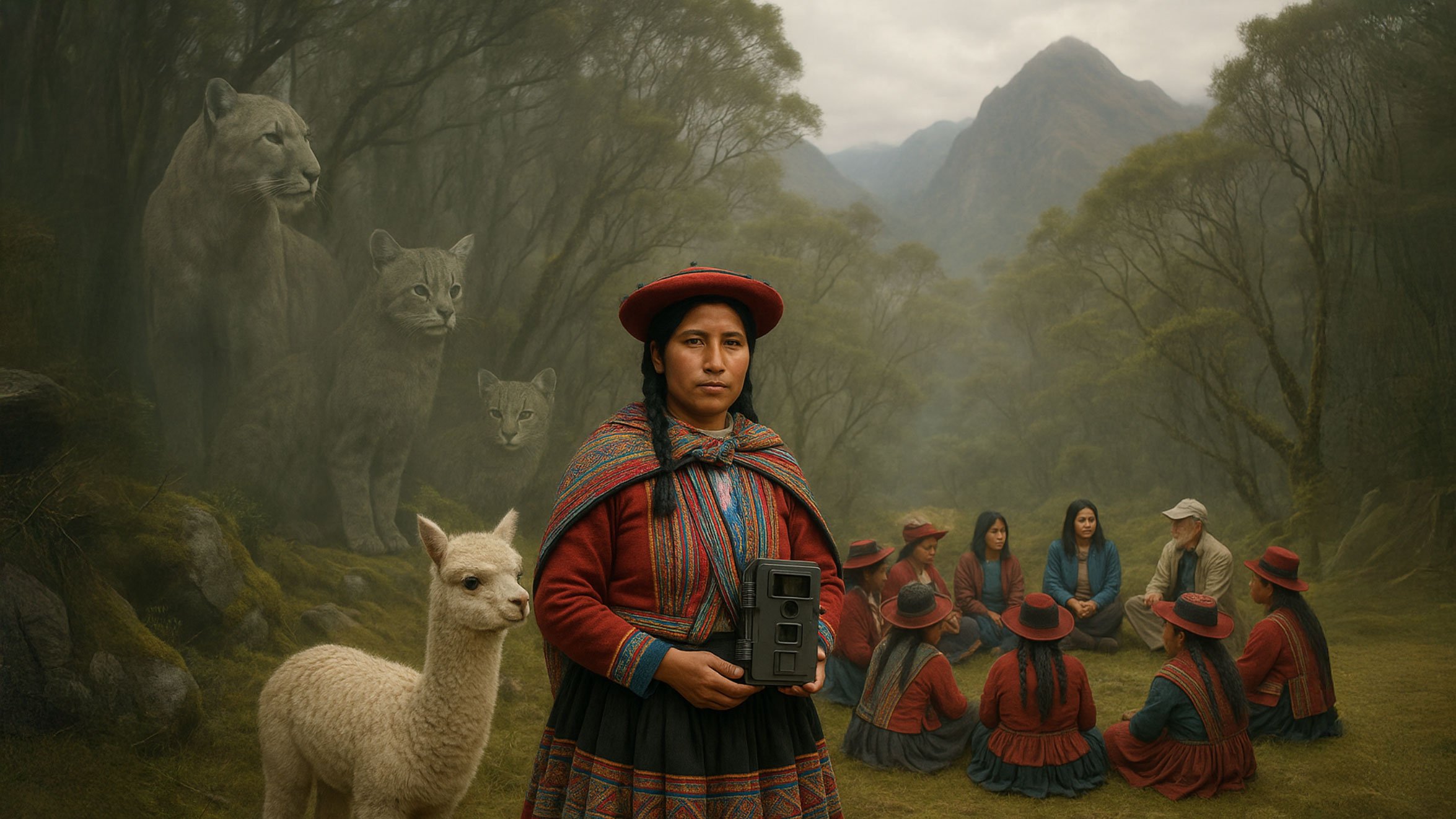Ghost Cat of the Andes: Racing Extinction on a Crumbling Roof of the World
High in the snow-dusted cliffs of the Andes, where oxygen thins and shadows stretch long at dusk, lives a cat so rare and mysterious that many of its own protectors have never seen one alive.
She appears like a spirit — cloaked in silver-gray fur banded with charcoal stripes, her long ringed tail trailing behind her like a forgotten wisp of smoke. This is the Andean cat (Leopardus jacobita), one of the world’s most endangered wild cats, and certainly one of its most elusive. Only about 2,000 mature individuals are believed to exist, scattered thinly across a range that spans the highest reaches of Argentina, Bolivia, Chile, and Peru.
And like the glaciers melting beneath her feet, she is vanishing.
A Glimpse Through the Fog
Juan Reppucci, a field biologist with the Andean Cat Alliance (AGA), searched for nearly a decade before laying eyes on one. It happened during a chaotic day in Jujuy Province, Argentina. While looking for a lost radio collar and his equally lost dog, Monty, Juan stopped to rest on a cliff. That’s when she appeared — an Andean cat chasing vizcachas (rabbit-like rodents) across the rocks, oblivious to the human presence.
For 40 minutes, Juan witnessed a moment most conservationists only dream of. The cat never noticed him. And Monty? He returned safely to town.
Life on the Edge — Literally
Living above 3,000 meters (9,800 feet), and often as high as 4,500 meters (14,800 feet), the Andean cat calls one of Earth’s harshest environments home. The freezing nights, scorching days, high winds, and low oxygen make it a hostile place for human researchers and camera traps alike.
Each cat roams a vast territory — up to 60 square kilometers (23 square miles). Their populations are not just sparse but fragmented, isolated by mountains, valleys, and now, increasingly, by the footprints of human industry.
And yet, they’ve adapted exquisitely to these barren lands. With thick fur, a powerful build, and agility unmatched on steep, rocky slopes, they specialize in hunting vizcachas, which flourish near patches of vegetation fertilized over decades by vicuñas' dung piles.
But even these adaptations cannot keep up with the speed of climate change.
A Habitat Melting Away
As global temperatures rise, the Andes are warming faster than many other mountain systems. Glaciers retreat, snowlines rise, and with them, the prey and the predators that depend on cold, rocky niches.
The Andean cat is a specialist. It thrives only in very specific conditions — and those are vanishing like the mountain mist. Its rocky refuges are shrinking, climbing higher, and fragmenting further. Eventually, they’ll run out of mountain.
Reppucci likens it to islands sinking beneath a rising sea. “The whole area that will be available will be reduced,” he says. “And it’s already reduced.”
The Hidden Cost of “Green” Solutions
Ironically, one of the greatest new threats to the Andean cat comes not from climate change itself — but from our attempts to stop it.
The global push for green energy has triggered a mining boom in the “lithium triangle” of Argentina, Bolivia, and Chile — which overlaps directly with the Andean cat’s core range. While the cats don’t inhabit the salt flats where lithium is extracted, the ripple effects are devastating: habitat loss, water depletion, new roads, increased vehicle traffic, and the spread of disease from dogs brought in by mining crews.
Worse still, these high-altitude ecosystems are dry and fragile. Mining doesn’t just dig holes — it scars landscapes for generations.
Genetics and Isolation: A Ticking Time Bomb
In 2023, geneticists confirmed what conservationists had long feared: the Andean cat has the lowest genetic diversity of any Leopardus species. Ten times lower than ocelots.
With such small and disconnected populations, every death matters. A single cat struck by a truck, poisoned by a miner’s dog, or killed by a retaliatory farmer could sever the thread that ties two populations together — dooming one or both to extinction by inbreeding.
A Flicker of Hope: Communities as Guardians
But not all is lost. The Andean Cat Alliance has embraced a grassroots model of conservation that may offer a lifeline — by turning local communities into the cat’s strongest allies.
One of their most impactful programs, CATCrafts, empowers women in remote villages to make handicrafts — often cat-themed — from recycled materials. In 2024 alone, this initiative brought $7,400 into five communities, creating not just income but pride. These women have become ambassadors for the Andean cat, spreading awareness and pushing back against mining incursions.
Other programs vaccinate and neuter dogs to reduce disease and competition. Educational outreach helps farmers understand that Andean cats are not to blame for livestock loss — and that killing them could destroy fragile links between populations.
Every Cat Counts
In the end, this story isn’t just about one rare feline. It’s about how we measure progress. It’s about reconciling our need for clean energy with our responsibility to protect the world’s most delicate ecosystems.
As Reppucci puts it, “Anything we can do for climate change, and anything we can do to help protect the Andean cat, is important for the species. Every kitten, every cat counts.”
Because when a ghost vanishes, it rarely returns.
✨ Be Part of the Solution
Support grassroots conservation. Buy from community artisans. Demand responsible sourcing in green energy. And share this story — because awareness is the first step toward action.
Let’s make sure the Ghost Cat of the Andes doesn’t fade into legend.
Read more: https://news.mongabay.com/2025/07/endangered-andean-cat-is-imperiled-by-climate-change-and-its-solutions/



